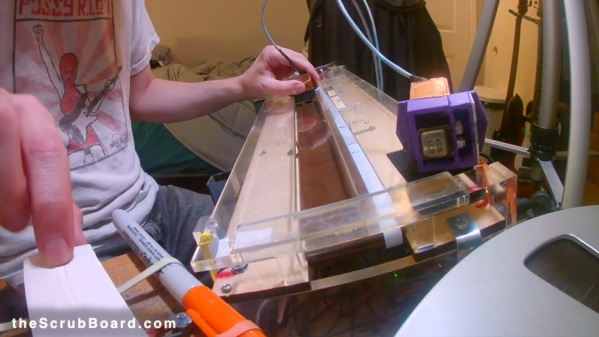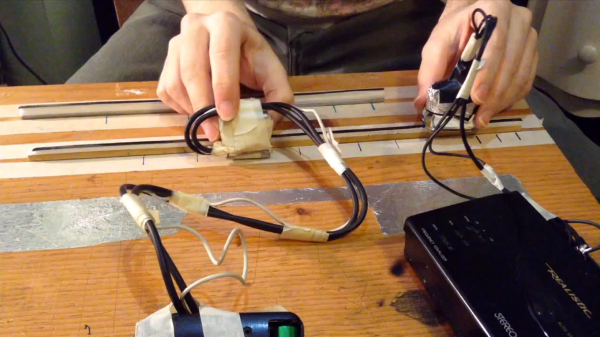It goes without saying that not everyone has the same taste in music, and what sounds amazing to one person will be the next person’s noise. But even if you’re not into hip-hop and the whole DJ scene, it’s hard not to be impressed with what [Jeremy Bell] has done here with his homemade tape loop “scratching” rig.
Most people have probably seen a DJ in a club using dual turntables to scratch or “scrub” a vinyl record back and forth to create effects that add to the music. Part musician and part performance artist, DJs and “turntablists” tend to be real crowd-pleasers. [Jeremy]’s “ScrubBoard” uses a loop of 2″ audiotape, the kind recording studios once used for multitrack recordings. The loop is driven across a wide platen by a motor with a foot pedal control, which he can use to quickly reverse the direction of travel and control the speed of the tape. A pair of playback heads are wired into the amplifier and can be positioned anywhere on the sometimes moving, sometimes stationary tape. The sounds he can create are rhythmic, percussive, and at times frenetic, but they’re always interesting. Check it out in action in the video below.
This version of the ScrubBoard is far from the first [Jeremy] has built. You may recall his first prototype from our coverage in 2014; that one used just a few feet of 1/4″ tape fixed to a board. He was still able to get some great sounds from it, but this version should really change things for him.
Continue reading “DJ Scratches Out Club Music With Tape, Not Turntables”















